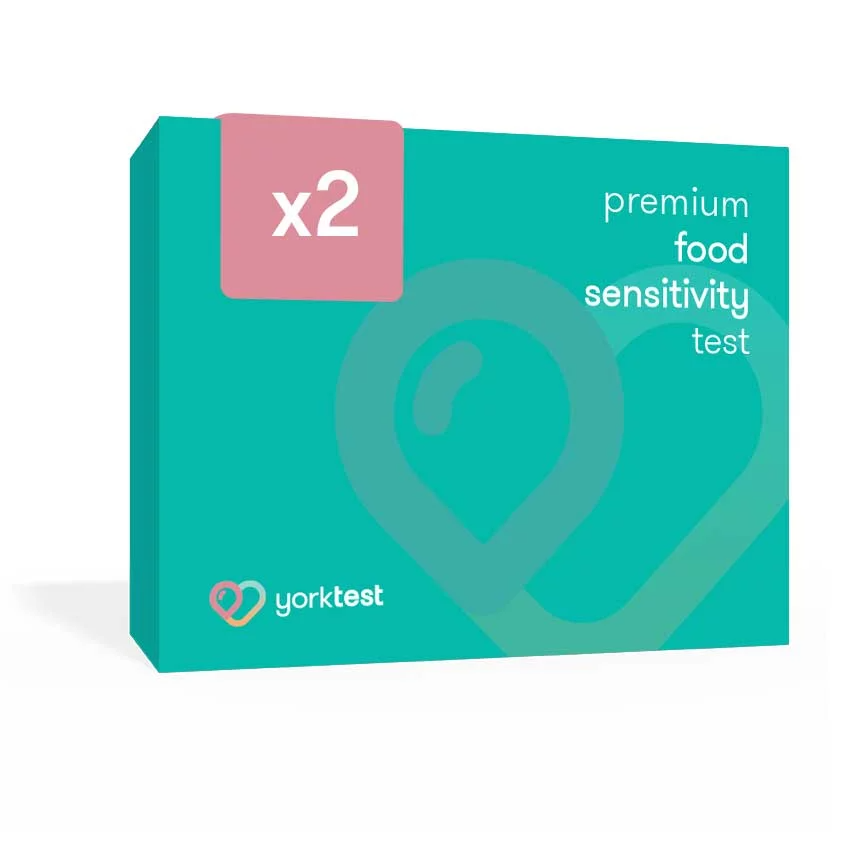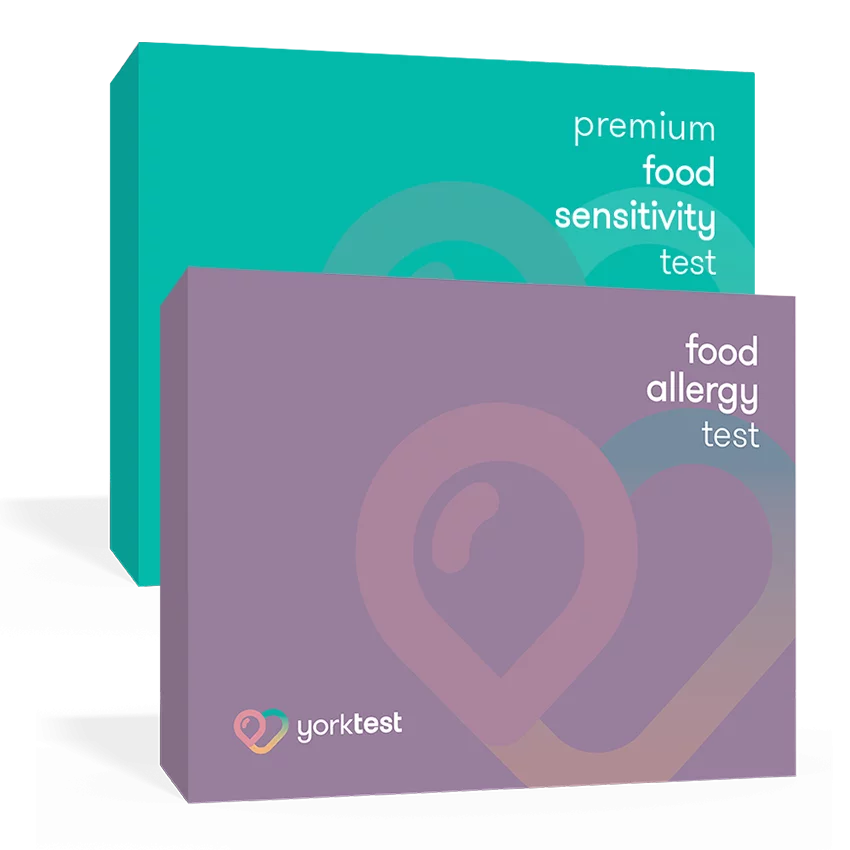
Peach Allergy: Pinpointing the Symptoms, Cross-Reactive Foods, Tests and Treatment Options
- How Common is Peach Allergy?
- Peach Allergy and Oral Allergy Syndrome (OAS)
- Common Symptoms of Peach Allergy
- Peach Allergy vs. Peach Sensitivity
- Cross-Reactive Foods to Avoid If You’re Allergic to Peaches
- Testing Options for a Peach Allergy
- How to Treat a Peach Allergy
- Here are some tips on preventing an allergic reaction:
- Pinpoint your sensitivities with YorkTest
Peaches are part of the stone fruit family, also known as drupes, characterized by their hard seed/pit. Other stone fruits include apricots, cherries, nectarines, and plums. The United States is one of the top five global producers of peaches. According to the U.S. National Agricultural Statistics Service (NASS), California, Georgia, New Jersey, and South Carolina are the top states in peach production.
This popular fruit is high in vitamins, minerals, and antioxidants, including vitamin C, polyphenols, and carotenoids. However, peach allergy is an issue that prevents some people from enjoying it.
Understanding how the body can react to peaches is essential for those who experience symptoms after consuming this fruit, or other cross-reactive foods. Here we peel back the layers of peach allergies, covering symptoms, testing, and potential cross-reactivity with other allergens.
How Common is Peach Allergy?
Peach allergy is a relatively common fruit allergy, and people with fruit allergies also report having an allergic reaction to peaches. Interestingly, this allergy seems to be more prevalent in Mediterranean regions where peaches are a dietary staple.
An allergy to peaches may develop in people either as a “true allergy” to the fruit or as cross-reactivity from a birch pollen allergy. A “true” peach allergy stems from an IgE reaction to the Pru p 3 protein found in the fruit. However, many people who have a known allergy to birch pollen may also develop allergy symptoms when consuming peaches due to the similarity in the protein structures found in both. This cross-reactivity is called Oral Allergy Syndrome (OAS).
Peach Allergy and Oral Allergy Syndrome (OAS)
OAS is a contact allergic reaction triggered by raw fruit or vegetables coming into contact with the mouth or throat. If you suspect you have a more complex allergy syndrome, then you should seek medical advice from your primary care physician or an allergist.
When you have an allergic reaction, the proteins in peaches are mistaken by the immune system as a threat. The majority of the protein is found in the peach skin, so many individuals with OAS will tolerate peaches when eaten peeled. In fact, one study reported symptoms were significantly reduced in allergic individuals who consumed canned peaches compared to the actual peach pulp.
Common Symptoms of Peach Allergy
The symptoms of peach allergy can vary from mild to severe depending on the individual and the form in which peaches are consumed. Some of the most commonly reported symptoms include:
- Mouth itching, tingling, or swelling
- Swelling, typically in the face, lips, tongue, or throat
- Congestion, wheezing, sneezing, or trouble breathing
- Stomach pain, cramps, vomiting, and diarrhea
- Anaphylaxis is a severe, life-threatening allergic reaction that can cause difficulty breathing, a drop in blood pressure, and loss of consciousness
Symptoms of peach allergy typically appear within 5-15 minutes after consuming raw peach, but may also occur after consuming cooked or processed peach products. In cases of OAS related to pollen allergies, the symptoms are often local reactions in the mouth and throat.
Peach Allergy vs. Peach Sensitivity
What if you have a peach sensitivity rather than an allergy? People often use the two terms interchangeably, but they are different reactions involving different bodily responses. Understanding the differences is key for managing symptoms and adapting your diet:
- A peach allergy elicits an IgE antibody immune response whereas a peach sensitivity triggers an IgG antibody response.
- Symptoms of an allergic reaction can begin immediately, or shortly after, contact with a trigger allergen. On the other hand, symptoms of peach sensitivity can take several hours, or even days, to appear.
- The typical profile of symptoms differs. Whilst a peach allergy is linked to swelling, itching and sneezing, a sensitivity is more likely to trigger symptoms such as:
- Diarrhea
- Bloating
- Skin conditions e.g. eczema or psoriasis
- Headaches
- Fatigue
- If you’re experiencing any of the symptoms on the list above, we recommend taking a Premium Food Sensitivity Test to see whether peaches are triggering an IgG reaction in your body.
Cross-Reactive Foods to Avoid If You’re Allergic to Peaches
If you experience symptoms after eating peaches, you should be mindful about consuming other potentially cross-reactive foods, including:
- Apples, pears, apricots, cherries, and plums
- Melons, including watermelon, cantaloupe, and honeydew
- Bananas
- Hazelnuts
- Celery and carrot
- Any food that contains peaches or peach flavoring
As mentioned, in some cases of OAS, you may be able to tolerate peaches if they are cooked or processed. The proteins in food that trigger OAS symptoms are heat-labile and are therefore easily destroyed by cooking. However, if you have a ‘true’ peach allergy, it is important to avoid all forms of peach and peach-containing foods to prevent a serious allergic reaction. You should seek advice from an allergist to agree on an avoidance strategy that’s right for you.
Testing Options for a Peach Allergy
There are different testing methods to help identify a peach allergy, some of the most common tests include:
Skin Prick Test: An allergist places a small amount of peach extract onto the skin – usually the forearm or back. The skin is then pricked with a small needle. If raise bumps, redness or swelling occurs, this indicates an allergy to peaches.
Blood Test: A blood test measures the levels of Immunoglobulin E (IgE) antibodies in response to the suspected allergen – in this case peach. High IgE levels suggest an allergic reaction is likely occurring. This method is very convenient as you can purchase a home-to-laboratory Food Allergy Test.
Elimination Diet: Individuals can also eliminate peaches from their diet temporarily before reintroducing them in controlled amounts while monitoring any reactions closely. This should only be attempted under supervision from a medical or nutrition professional.
The downside to this testing method is that an elimination diet alone can’t differentiate between an allergy and sensitivity. If someone has an allergy to peaches, then they should not attempt to re-introduce them to their diet.
How to Treat a Peach Allergy
It is important to note that there is no cure for food allergies, including peach allergy. However, with proper management and avoidance of trigger foods, individuals can lead healthy lives.
Here are some tips on preventing an allergic reaction:
- Avoidance: The effective way to manage peach allergy is to avoid consuming peaches altogether, including any foods or drinks that contain peaches as an ingredient.
- Cleanse your skin: If you experience a mild skin reaction, washing the areas that came into contact with the fruit, such as your face and hands can provide relief.
- Check food labels: Reading food labels carefully and being aware of cross-contamination risks is important to prevent accidental exposure to peach allergens.
- Inform others about your allergy: When dining out, inform your server about your fruit allergy, enabling them to communicate with the chef and ensure your safety.
- Avoid peaches during high pollen counts: For individuals who know they have Oral Allergy Syndrome (OAS), understand the prevalent types of pollen in your area. It’s especially important to refrain from consuming peaches – or any cross-reactive foods – during periods when alder or birch pollen is abundant, as it can exacerbate symptoms. Local weather forecasts may provide information on pollen levels.
- Consider carrying an EpiPen: If you are aware of your potential for severe allergic reactions to peaches, consult with your allergist about obtaining an epinephrine autoinjector, such as an EpiPen, to carry with you at all times in case of an emergency.
Pinpoint your sensitivities with YorkTest
If you suspect you have a sensitivity or allergy to peaches, consider taking a YorkTest. We specialize in home-to-laboratory food sensitivity and allergy tests which assess how a person’s immune system reacts to specific foods and drinks.
- Premium Food Sensitivity Test is ideal for adults 18+. The test analyzes an individual’s IgG reactivity to 200 foods and drinks, including peaches.
- Junior Food Sensitivity Test is ideal for kids aged 2-17. It also analyzes IgG reactions but has been designed to better suit children’s diets.
- Food Allergy Test is suitable for anyone aged 18+. The test analyzes an individual’s IgE reactivity to 23 foods, as well as 18 common environmental allergens.
These tests are easy-to-use and provide personalized results that can help you identify trigger foods in your diet.







